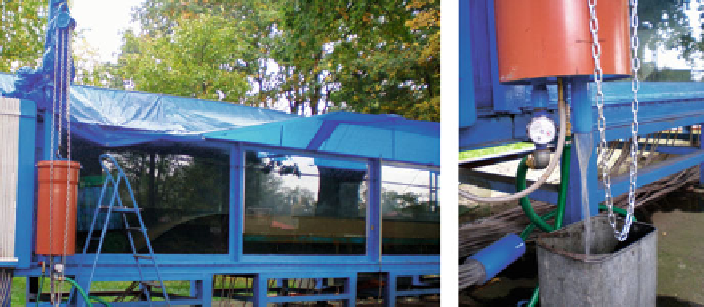Geoscience Reference
In-Depth Information
but modeled. This fact considerably reduces the computational costs and time.
The RANS equation can be expressed in the following way (Herrera-Granados
2009
):
@
U
i
@
U
j
@
U
i
@
1
r
@
@
u
i
u
j
t
þ
x
j
¼
x
j
P
d
ij
r
(3)
where
d
ij
is the Kronecker delta; the velocity is divided in two terms: its time
averaged value
U
and its velocity fluctuation
u
0
.
The last term of (
3
) represents
the Reynolds stresses, which are modeled using the Boussinesq approximation
(Herrera-Granados
2009
):
u
i
u
j
¼ rn
T
@
U
i
@
x
j
þ
@
U
j
@
2
3
r
r
k
d
ij
(4)
x
i
where
k
is the
turbulent kinetic energy
(TKE) and
v
T
is the eddy viscosity. These
are another two unknowns of the RANS equation that are to be solved based on
the model closure (e.g., the Re-normalized group
RNG
, the standard
k-
e
or the
k-
o
model). Some of these turbulence parameters can be estimated in the laboratory.
2 Experimental Works
2.1 Experimental Setup
The laboratorial research was carried out at the open air laboratory of the Wrocław
University of Technology. This laboratory is provided with two rectangular
channels and the biggest of these flumes was used for the experiments (Fig.
1
).
Fig. 1 The flume and the tank that provokes the induced seepage through the sandy layer






